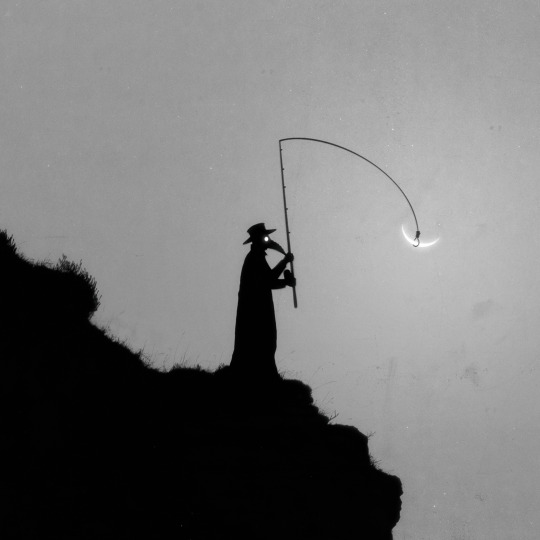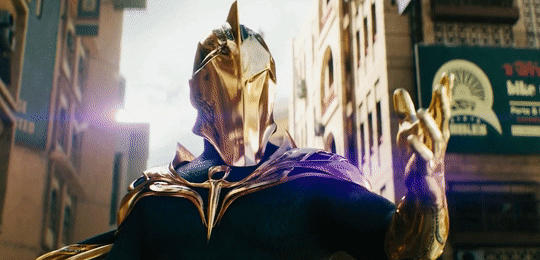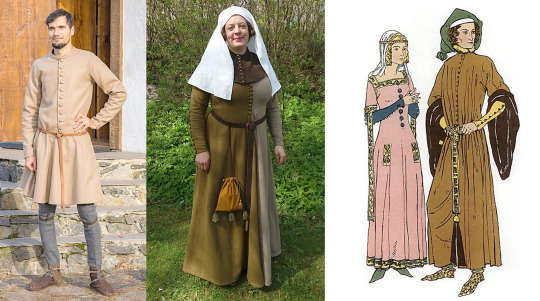#Black doctors in film
Explore tagged Tumblr posts
Text










N’Bushe Wright as Dr. Karen Jenson (Blade)
Will Smith as Dr. Robert Neville (I Am Legend)
Black doctors in sci-fi films
#N’Bushe Wright#Will Smith#Blade#I Am Legend#hematologist#virologist#scientist#Black doctors in film#sci-fi#branch of science
1 note
·
View note
Text
Beetlejuice's Backstory and the Black Plague 💚🕷️🥀💀 PART 1

I went and watched the new Beetlejuice movie twice already, can’t wait to share my thoughts! I’ve decided to make a series of posts mainly dedicated to people that are curious about the Black Plague era and BJ's past life. Join me for a historical dive that might make you appreciate Tim Burton’s work even more!
Warning: This post contains SPOILERS for the 2024 movie Beetlejuice Beetlejuice.
Premise
In European countries, we often study the Black Plague in schools. In Italy specifically, the disease spread multiple times throughout the Middle Ages, with the two worst pandemics occurring around 1350 and 1630. The first one alone spread in many countries and caused a total of 20 million deaths - a THIRD of the population of the whole European continent at the time.
However, the 1630 outbreak is the one we know about the most, thanks to author Alessandro Manzoni (1785-1873), who described it meticulously in his masterpiece, ‘I promessi sposi' (The Betrothed): This book is one of the most important works in Italian literature. Although it is a novel, it is often treated as historical evidence because Manzoni actually shaped the story referring to archival documents and chronicles of the time.
Introducing: Monatti, the corpse carriers
In his book, Manzoni recalls a group of people called 'monatti' - the only ones allowed to practice public services such as collecting the dead and washing roads during those hellish times. This concession was motivated by the fact that monatti were considered immune to the disease.
However, they were feared and hated by the rest of the population, because they often misused their ‘privileged’ position: they were untouchable. They often extorted money from the living and stole the belongings of the dead and the sick alike, without repercussions. What made them special was the fact that monatti typically gained immunity after surviving the disease themselves.

“Farewell to Cecilia,” one of the most heart-wrenching moments in Manzoni’s novel, beautifully captured by Francesco Gonin.
In fact, the Black Plague typically spread in three ways: through skin contact (bubonic plague), lungs (pneumonic plague) or blood infection (septicemic plague). The Bubonic form was, and still is, the most common and had the highest survival rate, though it was still quite low. It was easily identifiable because it caused the lymph nodes to swell and become infected, forming characteristic 'buboes'.
It was believed that if a plague victim survived five days, the fever would subside, and they would recover within two weeks. This is what usually happened to the monatti. Similarly, Renzo, the protagonist in Manzoni’s book, recovers, though he never becomes a public worker.
Now, let’s dive back into Beetlejuice’s backstory.

Amidst the eerie glow of moonlight, he's depicted among corpses, at night, behind a wagon, stealing from the dead that were just thrown into a communal pit by plague doctors.
Notice how he’s directly touching the bodies with his bare hands, without any protection: usually, that was considered a death sentence.
In Manzoni’s book, there is a character that meets their end in a similar way, simply by touching the clothes of an infected person. During that era, the danger was so great that people used to burn the bodies of the plague victims along with their clothes, beds, and other possessions.
It is also worth mentioning that, during plague outbreaks, some city governments (particularly in Italy and Poland) imposed strict limitations on the movement of people and goods. In some areas, a nighttime curfew was also enforced (Yes, we invented the lockdown centuries ago!). Under those circumstances, being caught outside your own house at the wrong hour could mean instant death. But guess who had the freedom to roam as they pleased? Yes, monatti and plague doctors (and those with special permits).
Conclusion: Beetlejuice wasn’t just 'a humble grave robber', as he claims. He was definitely a plague survivor and, most likely, a monatto.
The fact that this scene was unveiled and narrated in Italian during the Venice Film Festival further convinces me that this is the correct interpretation of the sequence.
So, what do we think? Have you ever heard or read about The Betrothed before? Anyways, if you liked this analysis, make sure to check out PART 2, in which we can delve even deeper into Beetlejuice’s mysterious past!
Until then, have a fantastic week! ✨
#beetlejuice movie#tim burton#michael keaton#film theory#film analysis#film stills#cinema#film#movie#beetlejuice#betelgeuse#beetlejuice sequel#beetlejuice beetlejuice#europe#italy#heritage#plague doctor#beetlebabes#italian literature#alessandro manzoni#i promessi sposi#the betrothed#italian#historical novel#dark#grunge#plaguecore#black plague#keatonjuice#warner bros
205 notes
·
View notes
Text

Art by Lucas Garcete
#darkart#art#dark#film photography#symbolism#horror#poetry#blackandwhite#filmisnotdead#lucasgarcete#silhouette#silhouttephotography#artists on tumblr#digital art#gloomy art#rose#photooftheday#fine art photography#black and white photography#photographers on tumblr#plague doctor#plaguecore#plague mask#doctor plague
503 notes
·
View notes
Text










Vincent Price in his first starring role as Dr. Richard Cross
Shock (1946)
#vincent price#shock#film noir#oh doctor...please poke me with your...#hes so hot#so sexy#love the gif with the other guy...the way hes grasping Vincents arm...#the most homoerotic thing ive ever seen and I'm feral over it#fuck#bicon#bisexual#god#icon#1940s movies#black and white film#horror#old horror movies#vintage#movie#actor#handsome#gif#gifs made by me#gif set#my gifs#gifs
153 notes
·
View notes
Text
Buster Keaton and Roscoe Arbuckle Oh Doctor! - 1917
#buster keaton#1930s#1910s#1920s#1920s hollywood#silenst film#silent comedy#silent cinema#silent era#silent movies#pre code#pre code hollywood#pre code film#pre code era#pre code movies#damfino#damfinos#vintage hollywood#black and white#buster edit#old hollywood#slapstick#roscoe arbuckle#oh doctor#1917
111 notes
·
View notes
Text
There's parallels between Martha needing to be the fandom's strong independent "need no doctor" figure with how Fifteen is being praised/expected to be the 1st trauma-free Doctor of his generation. Same parallels between how people were surprised Eleven would have grief over Martha and how people were surprised about Fifteen crying after losing Ruby. Its like in response to Black trauma narratives there's a complete 180° where Black characters need to be positive enough to comfort audiences even though the trauma is still basically there.
Anyway this is why I May Destroy You and Rocks are goated when it comes to showing Black trauma properly bc it explores all sides including the limits of how long trauma can be hidden away
#i may destroy you#rocks film#doctor who#fifteenth doctor#martha jones#fandom antiblackness#rtd era#black representation
159 notes
·
View notes
Text
Say in the tags if any of these deaths gave you nightmares as a kid
#polls#tumblr polls#malificent#sleeping beauty#ursula#the little mermaid#the lion king#doctor facilier#the princess and the frog#tarzan#bill sykes#oliver and company#the horned king#the black cauldron#disney renaissance#disney films#disney#judge claude frollo#the hunchback of notre dame#gaston#beauty and the beast
436 notes
·
View notes
Text

Cesare and his doppelganger, doc Caligari. One of my headcanons, where Caligari and Cesare are not independent characters, but only dark sides of Francis' personality.
#conrad veidt#cesare the somnambulist#german expressionism#the cabinet of doctor caligari#the cabinet of dr. caligari#silent film#my art#my artwork#fan art#black pen
52 notes
·
View notes
Text

Goodnight out there, whatever you are.
#goodnight out there whatever you are#goodnight#goodnight out there#weird#the weird#black and white#horror#film#movie#monster#Universal Monsters#Frankenstein#Doctor Frankenstein#mad science#mad scientist#gallows#macabre#sci-fi
36 notes
·
View notes
Text
Hawkman: you’re our new Doctor Fate??
Y/N: yes and I’m still learning
Atom Smasher: learning?
Y/N: you know how many ancient tomes and books of knowledge are contained in the Helmet of Fate? 10,386,427.
Maxine: how many of those have you read?
Y/N: one…and a half
Maxine: I like this guy!
Y/N: and may I just say that the only studying I want to do…is your phone digits
Y/N winks and Maxine blushes…
Hawkman face palms…

#dc comics#dc comics humor#dceu#Justice society#justice society of america#doctor fate#black adam#black Adam film#atom smasher#cyclone#maxine hunkel#hawkman#maxine hunkel x reader#quintessa swindell#cyclone x reader#dc comics incorrect quotes#dc comics imagine#justice league
97 notes
·
View notes
Text



Marian Marsh photographed by Elmer Fryer for Alias The Doctor (1932)
#marian marsh#elmer fryer#alias the doctor#michael curtiz#lloyd bacon#1932#classic actress#classic film#pre code film#pre code hollywood#classic hollywood#old hollywood#vintage photography#black and white photography#black and white#gypsy#musical instrument#roses
15 notes
·
View notes
Text
Beetlejuice's Backstory and the Black Plague 💚🕷️🥀💀 PART 2

Hello, hellooo! I’m thrilled that so many of you enjoyed my previous post! 🎊 This is the second part of a series dedicated to the Black Plague era, BJ’s past life, and other movieverse theories.
If you missed it, here is PART 1.
Warning: This post contains SPOILERS for Beetlejuice Beetlejuice (2024) and many, MANY speculations.
In the previous segment, I analyzed various pieces of evidence and concluded that Beetlejuice was:
definitely a plague survivor.
possibly a monatto by profession (though this is still debatable).
most likely Italian, living in Italy during one of the historically significant outbreaks in European history.
However, we still haven’t addressed the million-euro question: Which plague outbreak did he live through when he was alive? And the reason I avoided this question until now is that it’s basically impossible to tell for now. Here’s why:
Reason number 1. The two most notable outbreaks in Italian history occurred in 1350 and 1630. However, after the first incident, the disease reappeared in smaller epidemics every few years across Europe. Additionally, upon rechecking my sources, I discovered three more significant outbreaks:
in 1658, mainly affecting Naples.
in 1749, confined to Sicily and Calabria.
the very last one, in 1815, affecting the Bari area (Noicattaro)
After these outbreaks, the disease seemingly disappeared from Italy for good, which is great news but leaves us with many possibilities.
Reason number 2. In both movies, Beetlejuice has repeatedly proven to be an unreliable narrator. This means we can’t take his origin story at face value.
For instance, his claim of being over 600 years old completely contrasts with the clothes he and Delores are wearing in the backstory sequence. That style of fashion is typical of the Baroque period, which flourished from the early 17th century until the 1750s.

To keep it brief: Beetlejuice’s neckband, his three-piece suit, and Delores’ outfit visually suggest that the backstory is likely set in the 17th century and definitely did not occur before the 16th century.
On top of that, consider that Tim Burton navigated various historical periods throughout his filmography: think about Sleepy Hollow, Sweeney Todd, Alice in Wonderland, Big Eyes, and Miss Peregrine’s Home for Peculiar Children. I believe that it’s unlikely that historical inaccuracies were unintentional.
For context, here is what Beetlejuice and Delores would wear if their story was actually set in the Middle Ages, around the 1300s-1400s:



…not quite the same impression they give during the backstory, is it? And lace cravats were invented in the 1660s. This fact alone is significant because:
It would suggest that Beetlejuice is actually 'younger' that what he stated: Personally, I believe he might be around 300-400 years old. However, this is just an approximation, and I might be wrong.
It would imply that the backstory he narrated and showed us might be a lie (partially or entirely).
Or… perhaps he lied earlier about being 600 years old, but the backstory is the actual truth? Maybe he never learned to count properly… who knows?
My point is that there’s no way to discern what is true and what isn’t. All I can do is analyze what I see with my own eyes, hoping to find some answers. And yes, this means that, in PART 3, I’m going to delve into historical fashion, in unnecessary detail.
But that’s fine, I enjoy making sacrifices for this team. 😀
Until then, have a fantastic week! ✨
#beetlejuice movie#tim burton#michael keaton#film theory#film analysis#film stills#cinema#film#movie#beetlejuice#betelgeuse#beetlejuice sequel#keatonjuice#beetlejuice 2#beetlejuice beetlejuice#europe#italy#heritage#plague doctor#italian#historical novel#dark#vintage#grunge#plaguecore#black plague#baroque#beetlejuice & lydia#beetlebabes#history
116 notes
·
View notes
Text

Art by Lucas Garcete
#darkart#art#dark#film photography#symbolism#horror#poetry#blackandwhite#filmisnotdead#lucasgarcete#silhouette#silhouttephotography#artists on tumblr#digital art#gloomy art#rose#photooftheday#fine art photography#black and white photography#photographers on tumblr#plague doctor#plaguecore#plague mask#doctor plague#animal art#horse#horses#horse art
294 notes
·
View notes
Text




Tim Curry as Doctor Monro in Burke & Hare, 2010
#tim curry#timcurry#Burke & Hare#Burke&Hare#Burke and Hare#BurkeAndHare#John Landis#Doctor Monro#Dr Monro#2010#tim curry gif#timcurrygif#actor#english actor#movie#movies#cinema#film#black comedy#dark comedy
13 notes
·
View notes
Text
Buster Keaton and Roscoe Arbuckle Oh Doctor! (1917)
#buster keaton#1930s#1910s#1920s#1920s hollywood#silent film#silent comedy#silent cinema#silent era#silent movies#pre code#pre code hollywood#pre code film#pre code era#pre code movies#damfino#damfinos#vintage hollywood#black and white#buster edit#slapstick#old hollywood#oh doctor#1917#roscoe arbuckle
42 notes
·
View notes
Text

ALL KAPS PLZ
#very swag#art#nostalgia#artists on tumblr#music#black tumblr#journal#blackexcellence#film#london#artwork#hiphop#cool stuff#black beauty#producer#90s music#my music#musician#human made art#wallpaper#doom#doomsday#doctor doom#old school#early 2000s#madvillain#underground#hip hop#y2k#nostalgic
24 notes
·
View notes